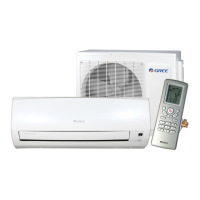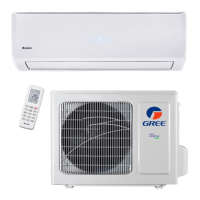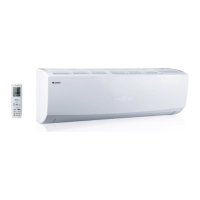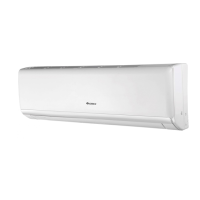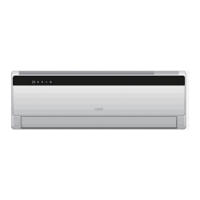N
2
/H
2
Leak Testing (Trace Gas Leak Detection )
A leak detection with the use of trace gas is a very reliable method and can find
even very small leaks with a leakage rate less than 1 gram per year. This tech-
nology enables service technicians to leak-test a system at lower pressure.
A process recognised as a “Fine Leak Test” is based on the use of the Forming
gas as the test gas in conjunction with a special leak detector. Forming gas is a
mixture of Nitrogen (N
2
) and Hydrogen (H
2
). A suitable electronic gas detector
must be used — a standard gas detector is not sensitive to Hydrogen. The fa-
vourable physical properties of hydrogen are made use of here for detecting
leaks. Forming gas in proportion of 95/5 % for RAC purpose contains 95% Nitro-
gen and 5% Hydrogen. Hydrogen constituents can escape from even the small-
est leaks, and will be detected by the gas detector. A test pressure of about 5
bar is adequate for reliable fine leak test.
The climate neutral Hydrogen gas is the smallest natural occurring molecule.
The favourable physical property of H
2
gas means that it diffuses through insu-
lating materials (or other covering material) if a leak occurs. This makes it possi-
ble to test refrigerant transfer pipes or components (including mechanical con-
nections) covered with insulating material without removing or damaging it. The
gas can penetrate even screed, foam etc. Hydrogen Leak Detectors do not have
a cross-sensitivity and for that reason a false alarm is not possible from external
gases. Since Hydrogen gas has a smaller density than air (14 times lighter) it
always rises and makes “tracing” above pipes possible.
The Hydrogen share in the Forming gas serves as Trace gas, and only this gas
is selected by the electronic sensor from the leak detector.
This leak test technology can be applied generally to all RAC systems and heat
pumps. Hydrogen (H
2
) is a naturally occurring gas and is charged with the Nitro-
gen into the empty refrigerant circuit. After leak testing the gas can be vented
safely into the environment.
Hints for the use of Hydrogen Trace Gas (H
2
) leak detectors:
1. Check your device at least once a year to ensure reliability and accuracy.
2. For optimum leak detection, hold the sensor head as close as possible over
the refrigerant transferring pipe. Move the sensor head slowly along the
pipe with a maximum speed of 0.2 cm per second.
3. Mechanical connections (screwed unions) or other connections must be
“scanned” slowly, move the sensor head right around the complete
connection point.
4. When the Leak Detector indicates a leak, it is advisable to hold the sensor
head away from the leakage site (spot) identified, for approximately 5 to 10
seconds. Then check whether the device indicates a leak at the same spot
again. Repeat this step up to three times. This will verify if a leak really ex-
ists!
Never switch
ON the AC
system if
charged with
OFDN and
Trace gas!
The use of Leak
Detectors de-
signed for Trace
Gas Leak
Detection is a
very accurate
testing method!
Regular Gas De-
tectors are not
useful for this
technology.
Example of Leak Detector
for Hydrogen Trace Gas

